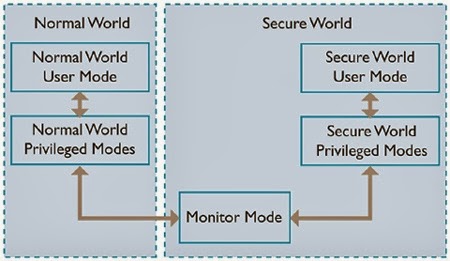aNewDomian.net — The buzz around the smartphone watering hole is that phones are so fast that the 64-bit processor on Apple’s new iPhone 5s hardly matters. That it is simply a marketing ploy.
Incorrect.
Built for the Future
This reminds me of when I consulted at MicroPro International, the publisher of WordStar — the best word processor of its time.
My consulting contract was yanked away after I told them that their second version of the processor, WordStar 2000, was going to fail because it lacked a graphical display. MicroPro ignored my advice because, hey, a GUI word processor would need 64 MB of memory and 16 MB was a ton of RAM back then.
In a world where Moore’s Law reigns true and supreme, we design with the future in mind, not the present. Apple’s 64-bit CPU will not change the speed at which you can place calls or texts. But it does create a platform where new, heavier applications can run at full capacity.
For example, we have seen the rise of computing, rather than hardware, to make better videos and photographs. The Lumia 1020, with its 41-megapixel camera, will feel dull in a few years.
The need for processing power will only increase as better voice recognition and synthesis becomes the standard. Physiological monitor-based applications and wearable gadgets will utilize the highest range of processing power available, and Apple has just upped the bar.
Tech Evolution
The question arises — what about standard PC replacement? My primary computer is a Dell Precision M4400 laptop. It has a dual-core 64-bit processor with 410 million transistors that is clocked at 3.06 GHz. It has 8GB of memory and a 256 GB solid state drive. I use this machine for 99 percent of my work, and unless I stream or render heavy video, the controls are quite responsive. If the CPU were ten times faster, I would not notice an increase in my own productivity, and only a small one in the PC.
The iPhone 5s has a dual- core 64-bit processor with “over 1 billion” transistors, clocked at 1.3 GHz. It has 1 GB of RAM and up to 64GB of storage. It also has a motion sensing coprocessor.
Anandtech reports that the new iPhone is substantially faster than its quad-core, faster-clocked cell phone competitors. Looks like Apple is using those billion transistors well.

Image credit: Anandtech
The iPhone is faster than other phones, but how would it compare to my laptop if it were plugged into a keyboard or monitor docking station?
Both have dual-core, 64-bit CPUs and, judging by the transistor counts and cell phone benchmarks, the iPhone processor should be able to beat my laptop. But, what about the low clock speed and relatively-small memory? And two cores sound kind of lame these days.
Apple has kept clock speed, memory capacity and core count low to save power, but, when docked, power is a minor consideration. I bet Apple’s clever engineers could design a dual-mode machine that slows and saves power when not docked. (Cooling would be a problem when docked and running fast.)
Canonical is taking a shot at cell phone docking with Ubuntu for Android. It is vaporware for now, but it has a cute video to illustrate the concept.
Touch ID and Privacy
Last week, I asked my class whether they thought the finger print reader on the new iPhone 5s was a big deal. They did not think so — they said they would be willing to pay from $0 to $10 for the added convenience.
Then I asked them about using it as a general ID for authentication and for purchases in stores and online. That caught their attention.
But will that happen? Brian Roemmele thinks it will change everything and builds a strong case in his post What is Apple’s new Secure Enclave and why is it important?
It turns out that some of those billion-plus transistors in the the A7 CPU are devoted to the implementation of patent-protected security features.
Image credit: Hardware Architecture of TrustZone
If Roemmele is right, we will see a slew of authentication and transaction-oriented applications for the iPhone 5s and future devices using this technology.
Here is the conclusion of Roemmele’s post:
Apple has taken a very slow and methodical approach with the release of Touch ID. We can see that there was a tremendous amount of amazing work that has gone into this project. All of this convergence took over seven years of very hard work. It includes many patent applications, the acquisition of AuthenTec, the selection of the A7 processor and the integration of the TrustZone suite all baked together into what we now know as Touch ID.
This has been a long journey that has only just been made public and I am rather certain that Steve Jobs would be quite proud.”
Apple traditionally does a major iPhone upgrade every two years. This was the year for a minor upgrade, but it laid the foundation for the future. I do not know what applications will be developed to utilize the 64-bit address space and processing power, but with an innovation streak like Apple’s, it seems prudent to say “build it and they will come.”
For aNewDomain, I’m Larry Press.
Featured image credit: Wikimedia Commons
Based in Los Angeles, Larry Press is a founding senior editor covering tech here at aNewDomain.net. He’s also a professor of information systems at California State University at Dominguez Hills. Check his Google+ profile — he’s at +Larry Press — or email him at Larry@aNewDomain.net.















excellent deep dive